
Peninsulas can add whole new dimensions to your kitchen – for working, eating, storage, and more...
A peninsula is a brilliant, multi-functional addition to any kitchen – especially if you don’t have space for an island. They offer extra work surfaces, storage, and seating while also serving as a natural divider in an open-plan layout. Whether you want to enhance functionality or create a striking design feature, a peninsula could be the perfect solution. Let’s explore the possibilities...
What is a kitchen peninsula?
A peninsula is broadly similar to a kitchen island, but unlike an island, a peninsula is attached to the kitchen wall or cabinets on one side and extends outwards into the room, commonly forming an L-shape. Peninsulas typically include base cabinets and a worktop, and they can also accommodate shelving, kitchen appliances, and a seating area.
What are the benefits of a kitchen peninsula?
- Maximising space – A great alternative to an island, particularly in smaller kitchens, as it takes up less floor space while still providing ample storage and work surfaces.
- Improving workflow – A peninsula can form part of the kitchen work triangle, optimizing the positioning of cooking, cleaning, and storage areas for greater efficiency.
- Extra worktop area – Ideal for prepping meals, serving drinks, or laying out snacks.
- Smart storage – Incorporate base cabinets, drawers, or open shelving to keep essentials within easy reach.
- Built-in functionality – Many peninsulas include sinks, hobs, or even wine fridges for added convenience.
- Casual seating – A breakfast bar or seating nook makes it a social hub for meals, chats, or a quick coffee break.
- Zoning in open-plan spaces – Naturally defines a zone within your kitchen without disrupting the visual flow of the room.
- A standout feature – The right materials, colours, and lighting can turn a peninsula into a showstopping design statement.
Where can you place a peninsula?
A peninsula works well in most types and styles of kitchen, including galley, L-shaped, and U-shaped kitchens. While a peninsula often consists of a row of units extending outwards at a right angle to the kitchen wall or cabinets, peninsulas can also be curved or set at an angle to suit your space.
Peninsulas are perfect for smaller kitchens, as they offer many of the benefits of a freestanding kitchen island while taking up less space. They’re also becoming increasingly popular in modern open-plan kitchens, as they help to delineate the cooking area from the rest of the space without interrupting the visual flow.
Peninsula Inspiration
1) Maximise storage space
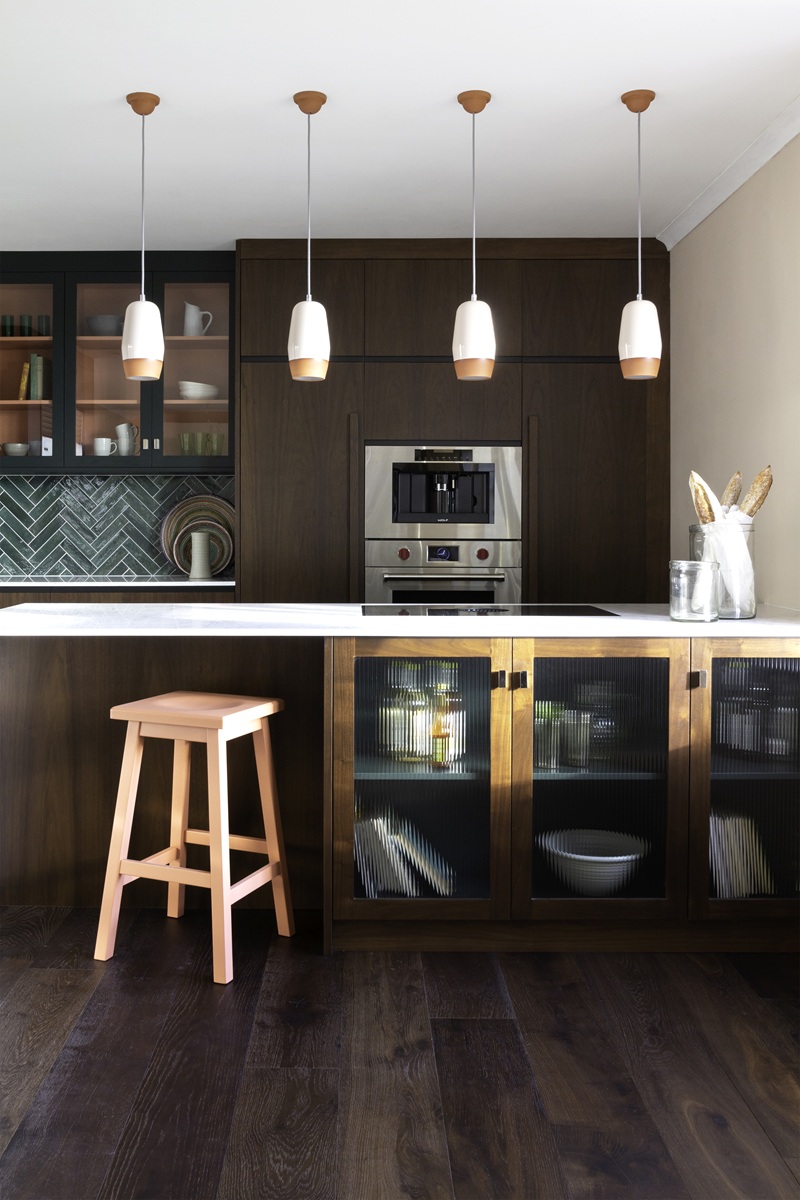
A peninsula is a clever way to boost storage. The Blenheim kitchen’s luxurious walnut base cabinets with reeded glass doors balance practicality with warmth and style, offering a mix of concealed and open storage for everyday essentials and display pieces.
2) Define the space and add wow factor with a waterfall peninsula
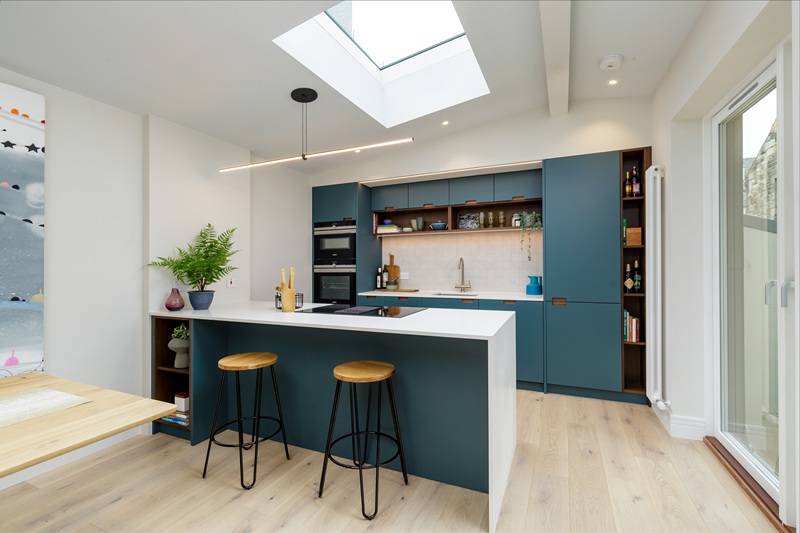
A waterfall worktop is an instant showstopper. In the Castle Mews kitchen, sleek white quartz cascades down the peninsula’s side, creating a striking contrast with deep Brancaster Blue cabinetry.
3) Mark out a dedicated cooking zone with integrated appliances
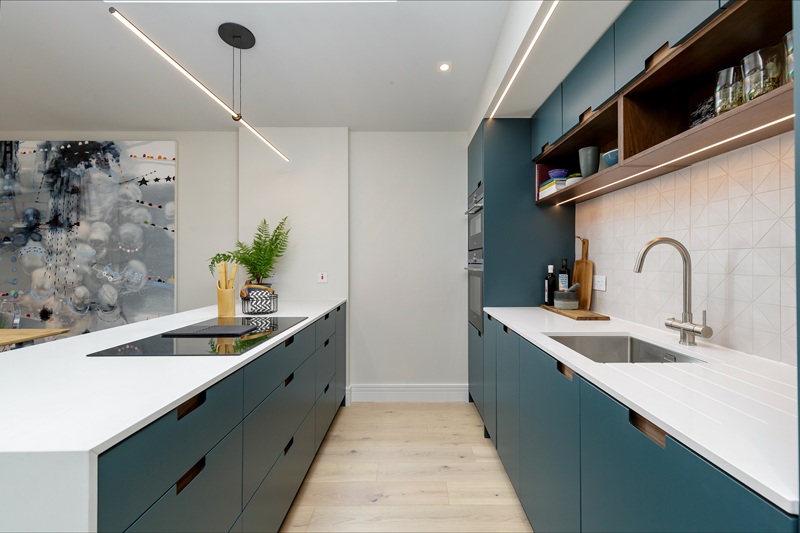
The Castle Mews kitchen also incorporates a hob into the peninsula, allowing the cook to face guests while preparing meals. The layout maintains an open feel while ensuring everything is within easy reach.
4) Create a casual breakfast bar with seating
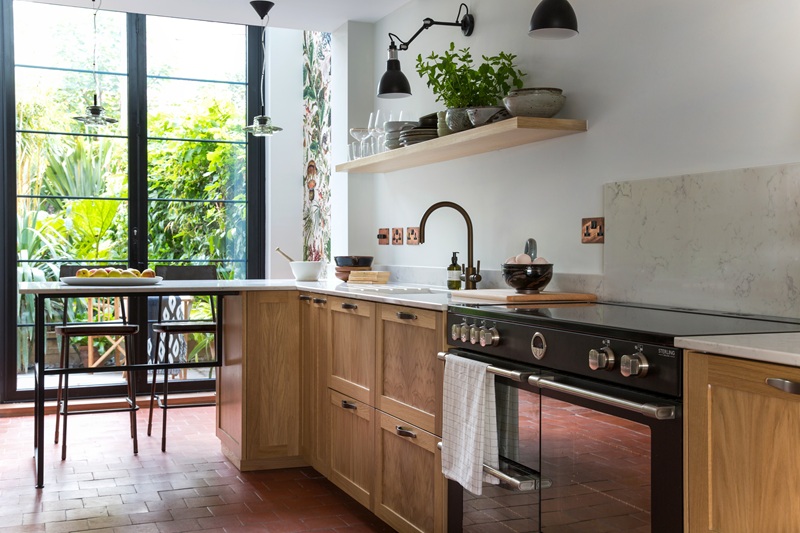
Featured in George Clarke’s Old House, New Home, this peninsula creates an inviting breakfast bar. Paired with stylish stools, it provides a relaxed spot for meals, work, or conversation.
5) Add contrast with different materials and colour pops
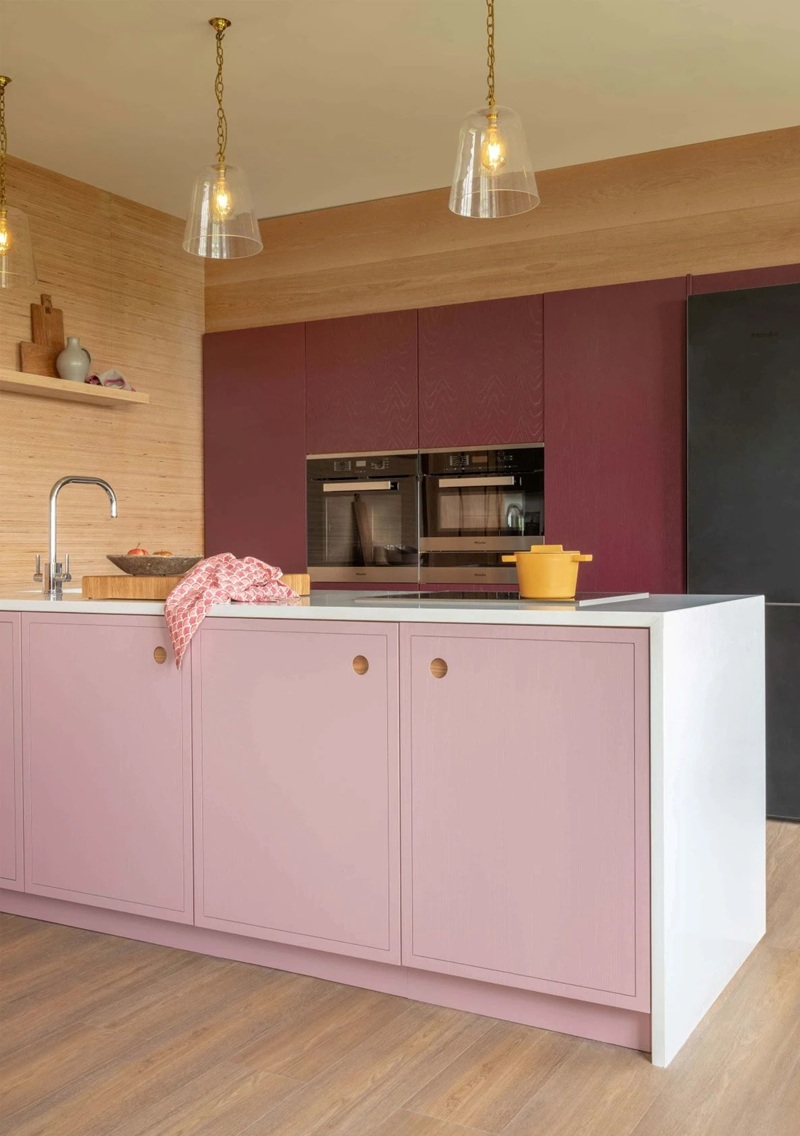
A peninsula can inject personality into a kitchen. In the Albert Bridge kitchen, a soft pink peninsula with oak Ladbroke handles contrasts beautifully with deep bramble-hued wall units, making the space feel fresh and lively.
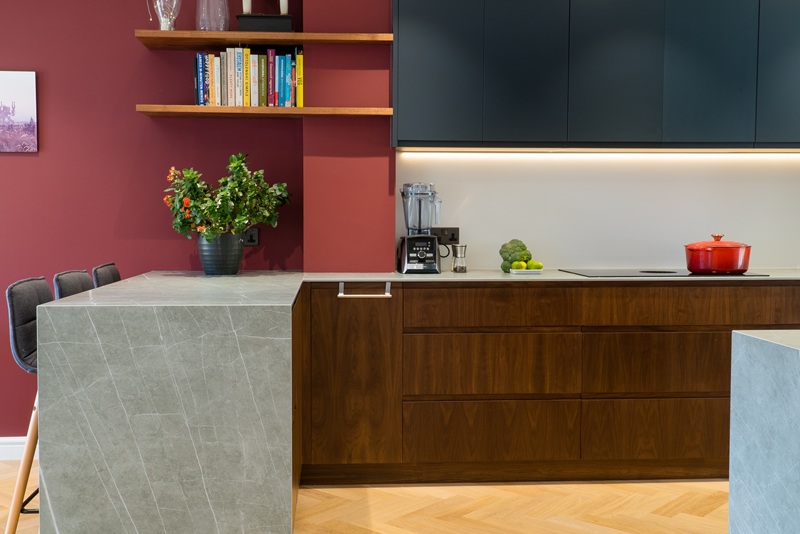
Meanwhile, in the Euston kitchen, a sleek veined waterfall worktop pairs beautifully with dark walnut cabinets, creating a striking contemporary look.
At Naked Kitchens, we can create a beautiful bespoke peninsula that’s built just for your space and lifestyle. Find out more here.
Frequently Asked Questions
What’s the difference between a kitchen island and a peninsula?
The main difference between a kitchen island and a peninsula is that a kitchen island is freestanding and can be accessed from all sides, while a peninsula is attached to the wall or kitchen cabinets on one side and extends outwards into the space.
Why choose a kitchen peninsula?
A peninsula offers a range of practical benefits, including additional worktop and storage space, integrated appliances, and a seating/dining area, while having a smaller footprint than a freestanding kitchen island and allowing the space to retain an open feel. A peninsula can also create a stylish focal point in a kitchen, adding character and making a design statement.
Are peninsulas only for small kitchens?
While peninsulas are a great choice for a smaller kitchen, a peninsula can work in most types and styles of kitchen and can help to create a visual divide between the kitchen area and the wider space in an open-plan setting.
See also:
Kitchen islands - a guide to different styles and ways to use them
Kitchen zones – an alternative to the kitchen work triangle
Unusual kitchen colours – tips, ideas and inspiration



















-800x600.webp)



